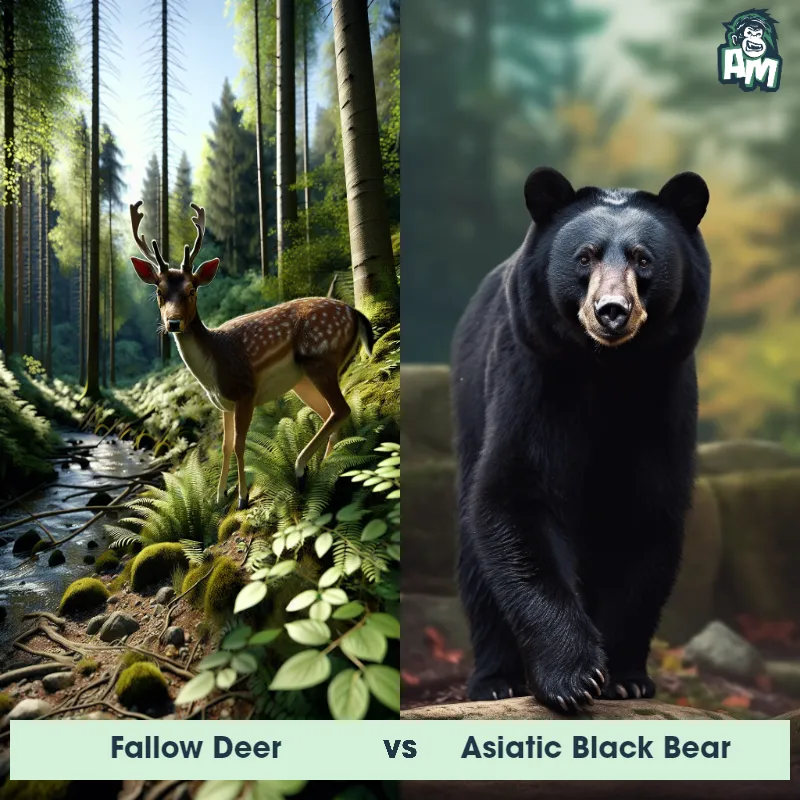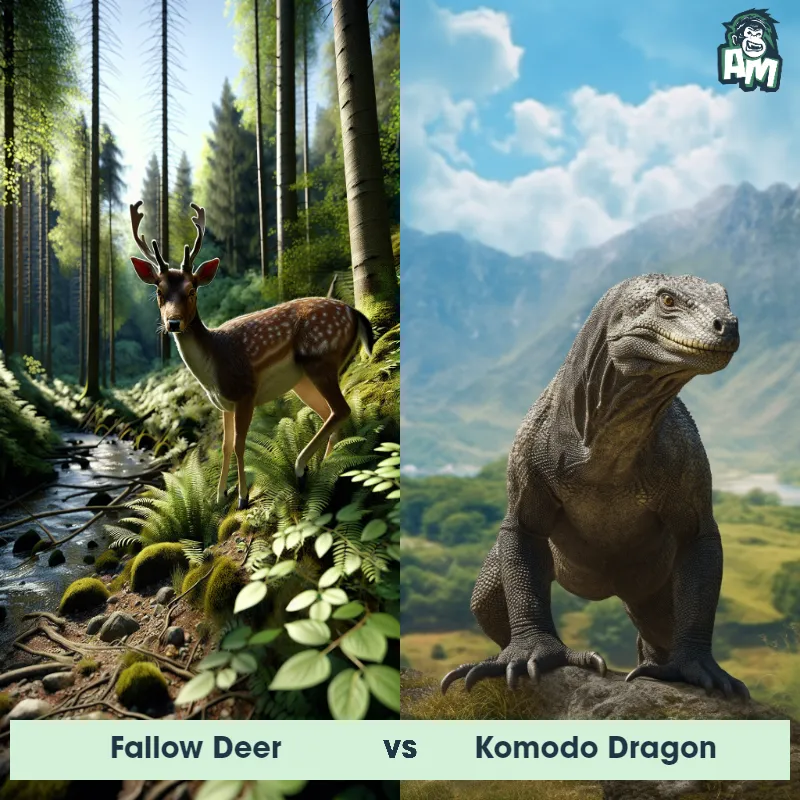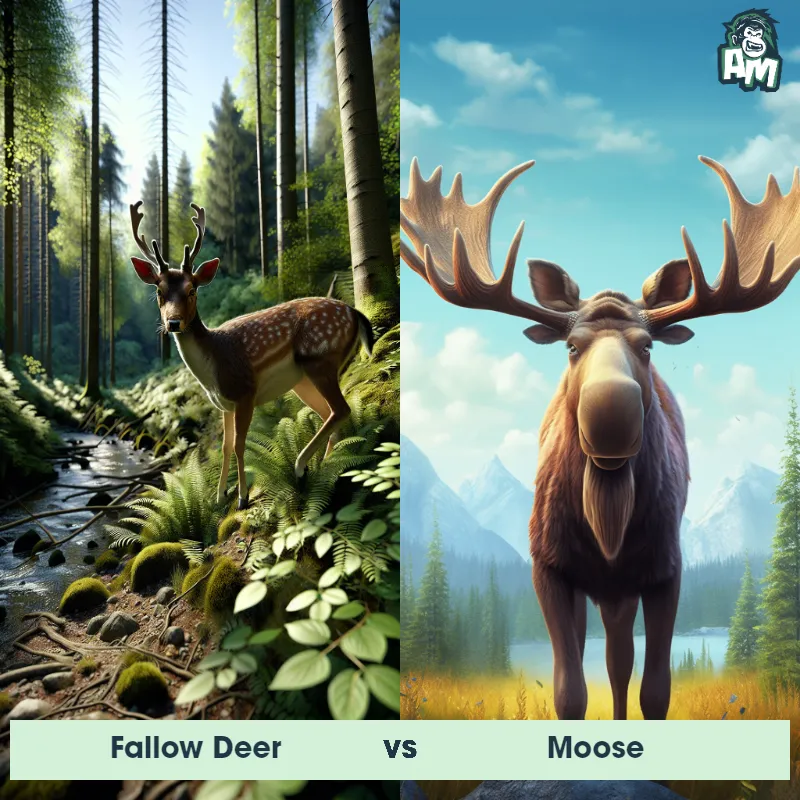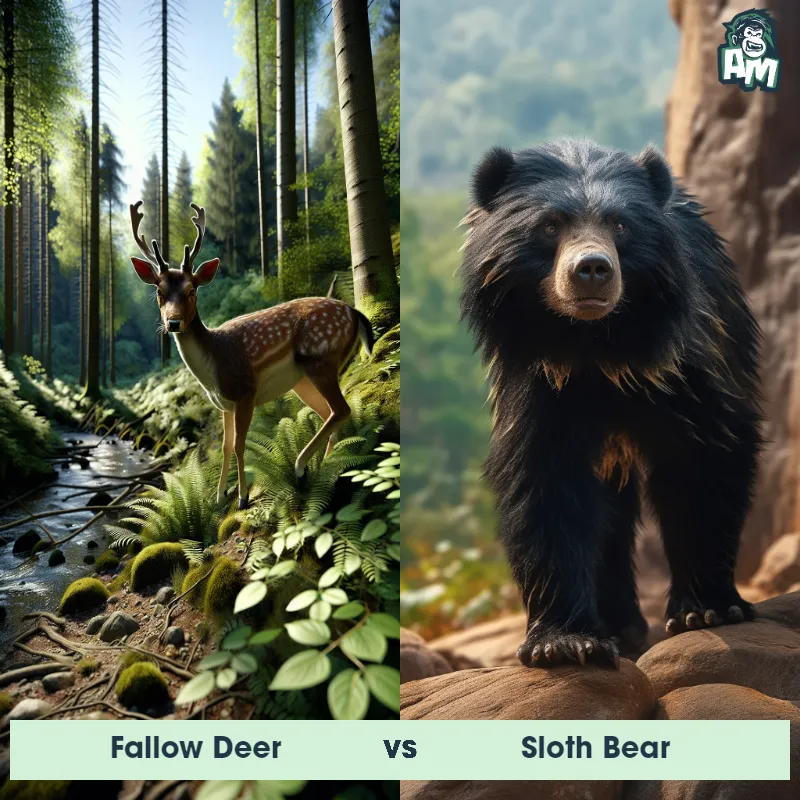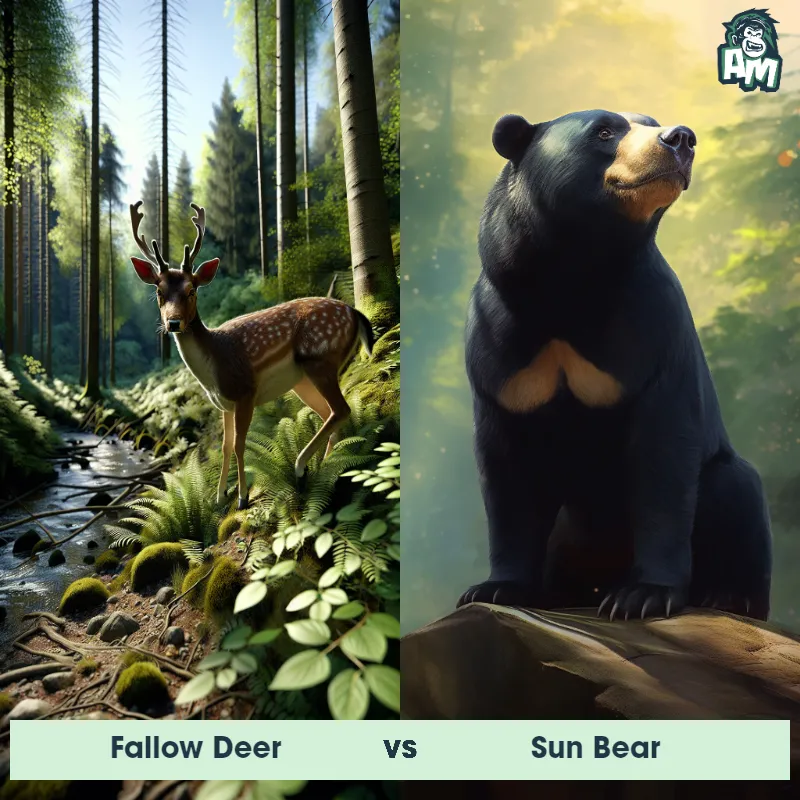The Fallow Deer
The Fallow Deer, native to Europe, is a medium-sized deer species known for its distinct coat patterns and elegant appearance. It stands about 3 to 3.5 feet tall at the shoulder and can weigh between 90 and 200 pounds. The most remarkable feature of Fallow Deer is their antlers, which are broad and palmate, with numerous branches extending from the main beam. The coat of Fallow Deer can vary in color, ranging from reddish-brown to white with characteristic white spots. They have a slender body, long legs, and a white rump patch that stands out when they run or are alarmed.

| Fallow Deer | |
|---|---|
| Size | 3-3.9 feet (0.9-1.2 meters) at the shoulder |
| Weight | 88-198 pounds (40-90 kilograms) |
| Speed | 37mph (60km/h) |
| Key Strength | Antlers for defense and dominance |
| Biggest Weakness | Lack of aggression compared to other deer species |
| Scientific Name | Dama dama |
| Family | Cervidae |
| Habitat | Forests, woodlands, grasslands |
| Geography | Found in Mediterranean regions of Europe, Asia Minor, and North Africa |
| Diet | Grass, leaves, buds |
| Lifespan | 10 years - 16 years |

The Fallow Deer
The Fallow Deer, native to Europe, is a medium-sized deer species known for its distinct coat patterns and elegant appearance. It stands about 3 to 3.5 feet tall at the shoulder and can weigh between 90 and 200 pounds. The most remarkable feature of Fallow Deer is their antlers, which are broad and palmate, with numerous branches extending from the main beam. The coat of Fallow Deer can vary in color, ranging from reddish-brown to white with characteristic white spots. They have a slender body, long legs, and a white rump patch that stands out when they run or are alarmed.
Fun Fact: Fallow Deer possess a fascinating displacing canine tooth called the "tush," which is unique among deer species. These elongated, sharply pointed teeth are located at the front of the mouth, just like canine teeth in dogs. However, unlike true canine teeth, the tushes in Fallow Deer serve mainly for territorial aggression and defense rather than tearing flesh.
| Fallow Deer | |
|---|---|
| Size | 3-3.9 feet (0.9-1.2 meters) at the shoulder |
| Weight | 88-198 pounds (40-90 kilograms) |
| Speed | 37mph (60km/h) |
| Key Strength | Antlers for defense and dominance |
| Biggest Weakness | Lack of aggression compared to other deer species |
| Scientific Name | Dama dama |
| Family | Cervidae |
| Habitat | Forests, woodlands, grasslands |
| Geography | Found in Mediterranean regions of Europe, Asia Minor, and North Africa |
| Diet | Grass, leaves, buds |
| Lifespan | 10 years - 16 years |
Fallow Deer Matchups
We use AI to simulate matchups between the Fallow Deer and other animals. Our simulation considers size, strength, and natural predatory behaviors to determine the most likely outcome.

Can't find the Matchup you want?
Create Your Own MatchupFallow Deer: Diet, Predators, Aggression, and Defensive Behaviors
What do Fallow Deer eat?
Fallow Deer are herbivores and primarily feed on grass, leaves, twigs, acorns, fruits, and nuts. Fallow Deer are known to be selective feeders and will browse for preferred plants in their habitat.
Do Fallow Deer have any predators?
Fallow Deer have several natural predators in the wild, including wolves, coyotes, bears, and mountain lions. Additionally, Fallow Deer may also fall prey to humans through hunting and poaching.
Are Fallow Deer aggressive?
Fallow Deer are typically peaceful animals and not known for being aggressive. However, during the mating season, male Fallow Deer, known as bucks, can become more aggressive as Fallow Deer compete for mates.
Do Fallow Deer fight?
During the rutting season, male Fallow Deer will engage in fights with other males using their antlers. These fights are primarily for dominance and the right to mate with a group of females.
How do Fallow Deer defend themselves?
Fallow Deer rely on their speed and agility to evade predators. When sensing danger, Fallow Deer may choose to flee quickly to escape harm. In some cases, Fallow Deer may also vocalize and stomp their hooves as a warning to potential threats.
What is the biggest weakness of Fallow Deer in a fight?
The biggest weakness of Fallow Deer in a fight is their relatively smaller size compared to other larger herbivores. While their antlers can be used for defense, Fallow Deer may struggle in confrontations with larger predators or during intense competition with rival males.
Fun Fact: One interesting behavior exhibited by Fallow Deer is their ability to "pronk" or perform vertical leaps, also known as "stotting." When alarmed or excited, Fallow Deer can leap high into the air, bouncing with all four legs extended straight before landing. This acrobatic display not only acts as a warning signal to other deer but also helps them to assess potential threats and predators in the surrounding environment.
Fun Fact: Fallow Deer have been domesticated for over 4,000 years and were primarily kept for their meat, as well as for their aesthetic appeal in parklands and deer parks. In some regions, particularly in England, the Fallow Deer played a significant role in medieval hunting practices and was considered a prized game species. Today, Fallow Deer can be found in various habitats such as woodlands, grasslands, and heathlands, and they have successfully established populations in several countries around the world through introductions and escapes from game parks.



